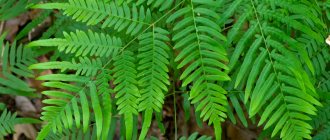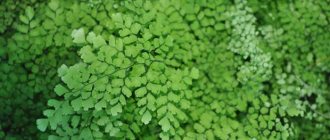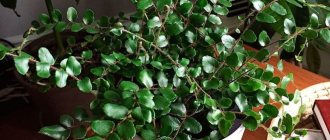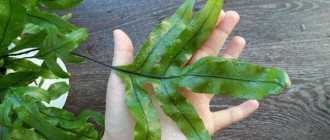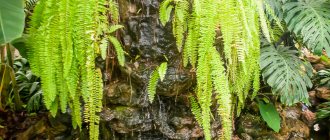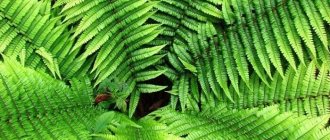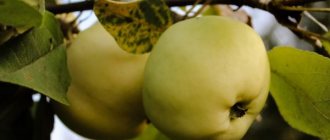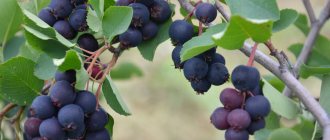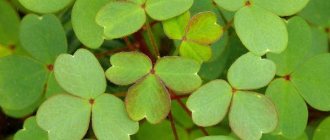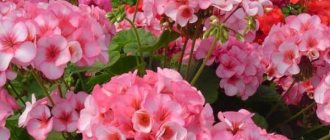When planning landscape design, every gardener thinks through everything down to the smallest detail in the arrangement of certain ornamental plants, taking into account the peculiarities of growing each crop. A slight problem is caused by shaded areas, where it is difficult to grow bright flowering crops, but ferns will feel great in the shade and in the northern half of the garden. These perennial plants can be easily grown under the shade of trees or in the shade of buildings, without worrying at all about their health and appearance.
The nomadic fern variety is also a frequent visitor to gardens, striking with its rather unusual leaf colors and a wide variety of subspecies and varieties. Kochedednik, which is easy to grow and care for in open ground, will be an excellent addition to any garden composition.
In order to properly place the nomadic plant on your plot and grow it, in this article we will consider the features and description of this crop, and give characteristics of the most popular varieties of nomad. We will also note important points and rules for planting and caring for this type of fern.
Features and morphological description of the nomad
In recent years, the nomadic fern has been quite often used for growing in the garden, for which you can choose a couple of dozen popular varieties of this subspecies of fern. It is perfect for planting as a background to flowering plants or as a solo ornamental plant in a little shade. Kochedyzhnik adapts well to unfavorable conditions, so it will be a valuable discovery for many gardeners.
The nomadic fern is a perennial herbaceous plant that belongs to the Aspleniaceae family and the genus Shchitovnikov, although more recently the nomadic fern belonged to the genus Kochedynikov. The nomadic fern is considered the oldest representative of its family and is found almost all over the world. The natural habitat of this type of fern is considered to be shady and damp areas, forests and coastal areas of water bodies, mainly in the Northern Hemisphere. Various varieties of nomadic fern grow in areas with a temperate climate, less often in the highlands of the tropics. This ornamental plant can be found in Europe, Asia, Russia, and America. In different regions of Russia you can find about 10-15 different varieties of kochedzhynik, which are often used by gardeners.
There are many legends and ancient tales associated with the nomadic fern, which tell about the magical power of this plant and the healing properties of its different parts. Many gardeners and lovers of unusual ornamental plants are puzzled by the specific name of this variety of fern. But there is nothing strange here. The word “kochedyzhnik” is directly related to the external characteristics of the fern. If you tear off a leaf of the nomadic fern at the beginning of autumn, you will see a kind of point in the place where the leaf is attached to the base. This tip looks like a curved and crooked arrow. It is this shape that resembles a very ancient tool that peasants used to weave bast shoes. And this instrument was called kochedyk. Hence the name of the fern variety.
Everyone knows the legend that if you see a blooming nomadic fern on the night of Ivan Kupala, you will be happy and rich all your life. In addition to this legend, we can mention another one, which is used in the Vologda region: if you sit near the nomadic fern on this night, you can see your future.
Description of the nomad:
- Kochedednik is a perennial, non-wintering fern that can be represented by both low-growing and tall plants.
- The nomadic plant has a rather thick and fleshy root, which is located in the upper layers of the soil. The rhizome is quite short, can be straight or creeping, black in color, with small dark hairs. The rhizome of this type of fern, especially the female fern, is used in folk medicine.
- The stem of the fern is quite short, dense, vertical, densely covered with petioles and leaf fronds.
- The leaves of the nocturnal fern have a lanceolate, triangular, pinnate or dissected shape. Most varieties have leaves that are three times pinnately dissected. The leaves of ferns are usually called fronds.
- The leaves are attached to the stem using short petioles covered with a film.
- The leaves of the fronds are quite large, they can reach 30-40 cm in length, and when grown indoors, the leaves can reach a length of 50 cm. They are collected in peculiar bunches. On the outer side, the leaf blades are covered with sori, in which sporangia of the nomadic fern ripen.
- The total height of this type of fern may vary, depending on the specific variety: on average from 20 cm to 150-200 cm.
- The frond leaves are the main decorative decoration of this fern. Depending on the specific variety, their color may vary. There are dark green leaves, feathery leaves, reddish leaves, bluish and grayish.
- Leaves begin to grow from the beginning of spring and continue to appear until autumn, which makes the nomadic fern bush very decorative and spectacular.
- This plant adapts perfectly to unfavorable conditions, can tolerate heavy gas pollution, and is resistant to frost and high humidity.
- The nomadic fern does not bloom and, therefore, does not form seeds, as it reproduces by self-sowing using spores.
- Kochedyzhnik is considered a fairly long-lived plant, which can remain in one place for about 10-15 years without replanting.
- The nomadic fern fits perfectly into landscape design in a natural style. It pairs perfectly with spring flowers under the tree canopy.
On a note
- Previously, other ferns were also classified as nomadic ferns, which were then separated into separate genera Diopteris and Asplenium.
- At the permanent growing site, it is important for nomadic growers to ensure protection from the prevailing winds.
- Nomads, as a rule, begin to spore in the 15-20th year of life. One plant is capable of producing from 75 thousand to 1 million spores.
- In nature, the nomadic plant grows in one place for more than 10 years.
- Nomads simply love slugs. They are collected by hand, traps are set for them and then removed and destroyed. You can protect fern plantings by treating them with metaldehyde for prevention.
Types and varieties of nomadic grass
The entire genus of Kochedyzhnik ferns has a large number of different varieties, which differ in completely different external characteristics and cultivation characteristics. In total, there are approximately 200 varieties of nomadic fern in the world, but only 10 are used in cultivation in Russia. More tropical varieties of this plant species can be grown at home.
Let's consider the characteristics of the most popular types and varieties of nomad grass among gardeners:
- Female Kochedyzhnik . This is one of the most common types of nomad grass, which can be found both in nature and in culture. This fern got its name for its beautiful lacy foliage, which is significantly different from the foliage of the male shield fern. In nature, the female nomad grows in North America, as well as in central Europe. After germination, frond leaves quickly grow and can reach a length of about 100 cm, and the total height of a fern of this species can reach 120-130 cm. The leaves have an oblong lanceolate shape, three or twice pinnately dissected, light green, collected in dense rosette. The rhizome of the female nomadic fern is quite often used in folk medicine.
- Nippon Kochedyzhnik . Another quite popular type. The Nippon nomadic fern is widespread in Japan, China, Vietnam, and Korea. That is why in the USA this beautiful ornamental plant is often called Japanese painted fern. It is considered the most decorative type of nomadic fern due to its bright and spectacular frond leaves: they have a silvery tint with reddish-purple streaks. This plant prefers to grow in the shade on moist soils. Nippon kochedynik is winter-hardy, so it feels great in the climatic conditions of Russia.
- Kochedychnik crenate . A perennial fern that prefers to grow in river valleys, on the banks of reservoirs, in damp and swampy forests. It is considered a rather low-growing plant; it can grow only 50 cm in height. It is distinguished by a long creeping rhizome and a short stem on which the fronds are located singly or in groups of 2-3 pieces. The leaf blade has an oblong ovoid shape, pinnately dissected, and a light green hue.
- Kochedyk is crenate-serrate . The natural habitat of this type of fern is considered to be the territory of the Far East and Primorye, where it grows in damp forests and along the banks of rivers and lakes. The frond leaves reach approximately 60-70 cm in length, due to which the width of the leaf blade often exceeds its length. The leaves are very delicate and beautiful. The variety is winter hardy.
- Needle-shaped kochedyk . The natural habitat of this species of nomad is considered to be the territory of the Far East. Ferns form rather dense and dense thickets in forests, which prefer shade and high humidity. The fern reaches a height of approximately 30-40 cm. The leaf blades of the fronds are diamond-shaped, openwork, pinnately divided, and arranged vertically. In this species, the petiole is longer than the leaf blade itself.
- Chinese nomad or red-petiolate . This type of fern is widespread in the Far East and Primorye. Forms dense and dense thickets, reproduces well by self-sowing. The leaves form a rosette. The fronds have a reddish tint, they themselves are openwork and quite large, attached to the stem with the help of short dark red petioles.
Popular varieties of nomad:
- Variety of nomad grass "Pictum" . A very bright and spectacular variety of kochedyzhnik, which is distinguished by its particularly decorative foliage. The leaf blade has a general bluish-green tint, which is diluted along the veins with a gray or pinkish color. The color is much brighter in the sun. For commercial purposes, this variety of nomadic plant is often called Metallicum.
- Variety of nomad grass "Ursulas Red" . There is also a very beautiful variety of Kochedyshnik, which will become a real decoration of the site. It got its name in honor of the scientist-breeder who bred it - Ursula Herz. This variety can be called Kochededzhnik red, since the central part of the fronds has a bright reddish tint, while the edges of the leaf blade are painted in a light green tone. Over time, the edges become silver and the center is a rich reddish-purple-green hue.
- Burgundy Lace variety . A fairly large and spectacular variety that amazes with the contrast of shades in its foliage. At the very beginning of the growing season, young leaves are completely painted in a reddish-wine color, gradually the color begins to change at the edges, becoming bluish or silver. At the end, only the central part becomes reddish.
- Okanum cultivar . The height of the bush of this fern can reach approximately 30-60 cm. The frond leaves have a greenish-reddish tint. When blooming, young fronds have a bright burgundy color, gradually turning yellow with burgundy petioles.
Magnificent small fern
Women's Kochedyzhnik "Victoria" is another magnificent representative of its class. The maximum height is up to 100 cm, so it can be used to decorate tight, small corners of the garden. The leaves are large, tender, light green. And the petioles of this species are yellowish or reddish. The leaf blade is twice or thrice pinnately divided. The fronds are non-wintering, but the roots will calmly endure the cold period and by the beginning of next summer they will produce new leaves.
This is the most unpretentious fern for shady gardens and normally moist soils. It will not grow in sandy areas. "Victoria" is a low variety with narrow leaves. Their narrow feathers are directed alternately up and down, due to which regular chains are formed on both sides of the leaf axis. This is an excellent option for shady flower beds, which can be supplemented with hostas and cereals.
Reproduction of the nomad: the most common methods
The nomadic fern is considered a fairly unpretentious plant, which does not require any additional effort to grow in your own area. You can grow this unusual plant yourself in your own area. For many propagation methods, it is important to have an adult plant in the garden, which provides planting material for propagation. Nomadic fern can be propagated in several ways: by spores and division of rhizomes. Let's consider the features of using these two options for growing an ornamental plant with your own hands.
Reproduction of the nomad by spores
- On the leaves-fronds of the nomadic fern, spores ripen on the outside, which can disperse independently, which promotes natural reproduction. This type of propagation is used mainly for species-specific nomads, much less often for varietal ones. This is due to the fact that the resulting plant may not inherit the maternal varietal characteristics.
- Spores can be sown both in spring and at any other time of the year.
- Initially, it is necessary to collect mature nomadic spores. To do this, take a fern frond and carefully scrape off the spores from the back side.
- Next, all spores must be treated with a solution of potassium permanganate, after which they are dried.
- It is necessary to prepare suitable containers for sowing spores. In this case, small glasses are suitable.
- The containers are filled with fertile soil; a mixture of peat and sand is ideal. The pre-prepared substrate must be shed with boiled water or the soil must be calcined in the oven. You can spill the substrate with a weak solution of potassium permanganate.
- Next, soil is poured into the container, on the surface of which the spores of the nomadic plant are laid out. There is no need to sprinkle them with soil; just cover the pots or containers with film or glass.
- It is important to place containers with spores in a room with the required temperature - a temperature of 23-25 degrees is suitable for the germination of nomadic grass.
- There is no need to water the spores at first. Only when the diameter of one spore is approximately 5 cm can it be watered with warm water once a week.
- If the spores are located very close, you can make a pick.
- When the first leaves appear, you need to water a little more often. When the leaves reach approximately 7-8 cm in length, the cover from the containers begins to be temporarily removed for ventilation, doing this procedure more and more often.
- The next season, around May, nocturnal fern seedlings can be planted in open ground.
Reproduction of the nomad by division
- This method is used much more often and is more simple and easy than the previous one. Vegetative propagation of nomadic fern is used to produce young plants of varietal ferns. Thus, they will not lose the maternal decorative characteristics, for example, the reddish tint of the leaves.
- It is recommended to propagate the plant by dividing the rhizome in the spring, but if this option is not possible, you can divide the plant at any other time. However, in this case there is a risk that the young plants will not have time to take root before the onset of cold weather.
- First of all, you need to carefully dig up an adult plant and lightly shake off the roots.
- Next, take a sharp pruner or knife and carefully divide the rhizome into several parts so that each section has its own bud.
- If the roots of a particular variety are short, you can use nodes with buds.
- After this, the prepared cuttings are planted in pre-prepared holes, the depth of which should be at least 20 cm.
- The soil needs to be mulched and covered with spruce branches for the winter, as young plants can freeze out.
Life cycle
Fully formed leaves live for one season. At the same time, they both perform a vegetative function and ensure reproduction. And at the first frost the leaves die. However, this does not end the life cycle of such an amazing plant as the female nomad. The fern, a photo of which we will present in the article, in August-September dissipates ripe pores, from which the gametophyte grows in the same autumn. This is the haploid, multicellular phase in the plant development cycle.
The gametophyte develops from spores and produces sex cells. Outwardly, it is completely different from the future plant. However, this small creeping plant can survive any conditions and turn into a beautiful fern in the spring. This is how female nomad grass reproduces. Pollen and pistil are contained in one spore, which matures and transforms into the rudiment of a new plant. That, in turn, undergoing stratification and hardening over the winter, grows in the new warm season and becomes a lush bush.
Preparation before planting the nomad
As already noted, the nomadic fern is very popular among gardeners due to its unpretentiousness in cultivation and care, as well as its great decorative value. Even novice gardeners can grow a plant, but for excellent results it is important to carefully prepare before planting, doing high-quality work in preparing the place for planting seedlings and purchasing healthy planting material.
Stage 1. Selection and purchase of nomad seedlings
- First of all, it is necessary to obtain high-quality planting material. You can grow it yourself, as described in the previous chapter. In another case, you can buy kochedizhnik in specialized garden stores.
- In garden centers and agricultural companies you can purchase already collected spores of the nomadic fern in bags or ready-made seedlings in pots.
- Before purchasing seedlings, you definitely need to think about what variety of nomadic grass you want to grow on your site. Varieties with reddish, purple and bluish leaves look impressive, which can also be combined to create bright garden compositions. For open ground, you should not buy tropical varieties of nomadic grass, which are also on sale. More heat-loving varieties can only be grown indoors.
- Before purchasing planting material, be sure to check the seedlings for damage: there should be no yellow areas on the stems and leaves, the soil in the containers should be clean and moist.
- When purchasing seedlings from agricultural companies, you can get competent and professional advice on the rules for growing plants.
- If nomadic plants grow in forests in your area, then you can get a young seedling by digging up and dividing an adult plant. In this case, be sure to grab some of the soil in which the fern grew.
Stage 2. Choosing a place to plant the nomad
- The nomadic fern prefers to grow in the shade; some varieties can tolerate temporary sunlight. Constant sun has a detrimental effect on the plant, as a result of which the plant may stop growing and lose its decorative effect.
- To obtain bright foliage color, you can plant the fern in the shade of trees or small shrubs, as well as on the north side of buildings.
- It is worth choosing a quiet place on your site, as strong winds and drafts can break the fragile leaves of the kochedednik.
- The chosen location for planting this type of fern should be well drained.
- Before planting the nomad, think over the garden composition, since seedlings can be planted on the banks of reservoirs, at the roots of trees, near stones, in the wildest places on the site.
Stage 3. Selection and preparation of soil for nomad grass
- The nomadic fern prefers to grow on fertile and loose soils.
- A prerequisite for planting a nomadic plant is that the soil must be breathable and moisture-permeable.
- The soil must absorb moisture well so that the roots are well nourished. However, the water should not stagnate.
- The soil can be prepared immediately before planting by carefully digging it and loosening it.
Nomad planting technology
- It is best to plant the nomadic plant in the spring, so that the young plant has time to take root before the onset of winter.
- First of all, you need to prepare planting holes, the depth of which should be approximately 20-30 cm. Keep in mind that if you are planting several seedlings side by side, it is important to maintain a minimum distance of 60 cm between the holes.
- Place a layer of river sand at the bottom of each planting hole, which will act as drainage and prevent water from stagnating.
- Next, prepare the soil, which consists of sand and peat. You can add humus and wood ash.
- If you are using a seedling from the forest, add some soil from the forest to the soil.
- Place the seedlings in the planting holes and cover them with prepared soil. Next, gently press the soil down.
- After planting, the young nomad needs to be watered abundantly.
- To prevent excessive evaporation of moisture, the soil around the fern is mulched with peat or humus.
The soil
athyrium piktum photo
In nature, ferns grow in moist forest soils rich in organic matter. Therefore, in culture it is necessary to create similar conditions for them. It will be good if you are not lazy and bring some forest soil; you should dig it up next to the nomadic plants growing in nature. This will be ideal.
You can fill the planting hole with organic matter (manure, for example) when planting a nomadic plant on the site. It is important to remember that nomads cannot tolerate turfy soil. Once dried out for the winter, this fern may simply no longer appear among the grass in the spring. Therefore, the soil around it must be constantly well loosened and weeded, and under no circumstances should you plant nearby ground covers that aggressively take over nearby areas: saxifrage, periwinkle, etc.
Agricultural technology for growing nomad grass: secrets and nuances of care
Growing a fern on your own plot will not be a big problem and will not require incredible efforts from the gardener, since this type of fern is unpretentious and undemanding. Caring for this plant is simple and straightforward and consists of timely watering, loosening and weeding, fertilizing and covering for winter.
- Watering . The nomadic fern is a moisture-loving plant, for which it is important to maintain frequent watering for a full-fledged plant. It is necessary to water the kochedyzhnik especially abundantly in the first year after planting and during hot weather. In this case, you need to water not only the root system of the fern, but also spray the fronds. Approximate watering regime: 1-2 times a week, during dry periods - you can water 3 times a week.
- Loosening and mulching. After each watering, it is important to loosen the top layer of soil, but this must be done carefully, since the roots are located very close to the surface. To prevent moisture from the roots from evaporating too quickly, it is recommended to mulch the surface with pine paws or needles.
- Feeding. If you used humus and peat when planting, then there is no need to additionally fertilize the plantings in the coming years. Then you can use liquid fertilizers to achieve the greatest decorative effect of the nomadic fern.
- Trimming. The nomadic plant does not need pruning. Sometimes you can carefully remove yellowed fronds. Damaged or broken fronds may also need pruning.
- Shelter for the winter. Kochedyzhnik is considered a frost-resistant plant, so there is no need to provide additional shelter. The exception is young plants immediately after planting. In this case, you can cover the plantings with fallen leaves.
Use in folk medicine
Fern roots are anthelmintic and diuretic. Tea made from the roots was used to relieve general body pain caused by childbirth. The dried powdered root was used to heal ulcers. Liquid root extract is an effective anthelmintic.
Young shoots collected before they have fully developed can be eaten, but not raw.
Fresh shoots contain thiaminase, an enzyme that removes B vitamins from the body. In small quantities, this enzyme is not harmful, although large quantities can cause serious health problems. This enzyme can be destroyed by heating or thorough drying.
Kochedyzhnik - photo
On the Internet you can find a large number of reviews about the fern, which describe the beauty of the appearance of this fern and the ease of growing. Planting such a plant in the garden is not difficult, but in the end you will get an original and effective decoration for your site.
Watering is very important!
Athyrium Japanese in the photo
Ferns are moisture-loving plants, and for good health they require constant additional watering. Remember this. Otherwise, one day suddenly remembering your green pet, you may see in its place only a withered past. Of course, with appropriate care, the plant can then recover, but excess stress will not do it any good - that’s for sure.
Don’t forget to mulch the soil at the “foot” of the nomad. For example, compost, grass clippings or even regular garden soil. This will help preserve moisture, which is invaluable for the plant!
